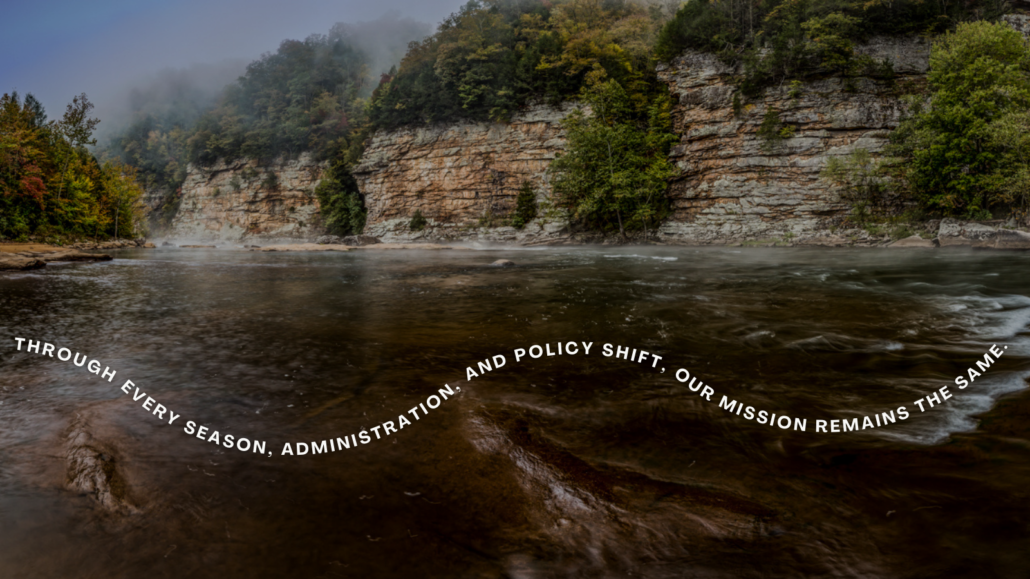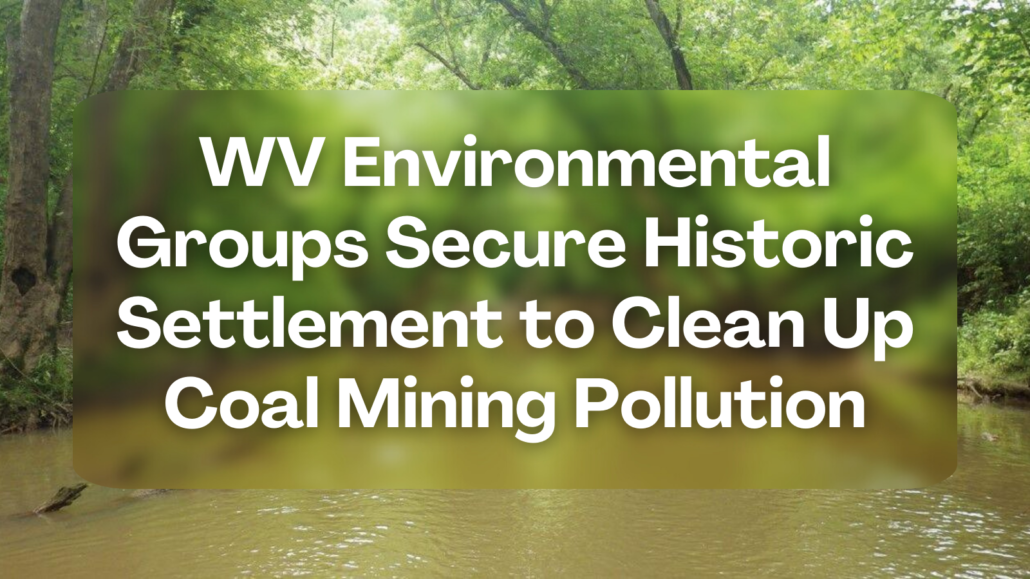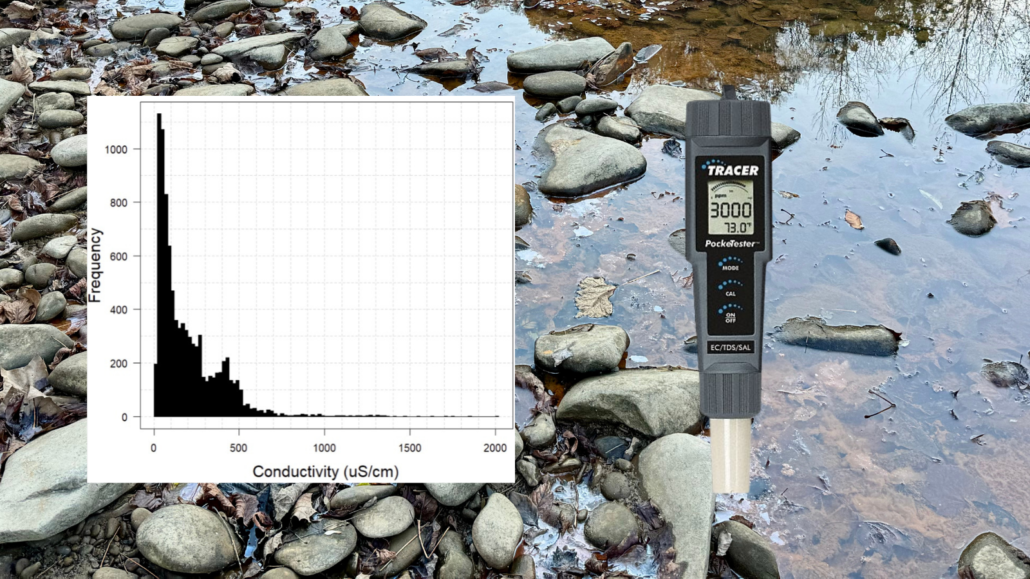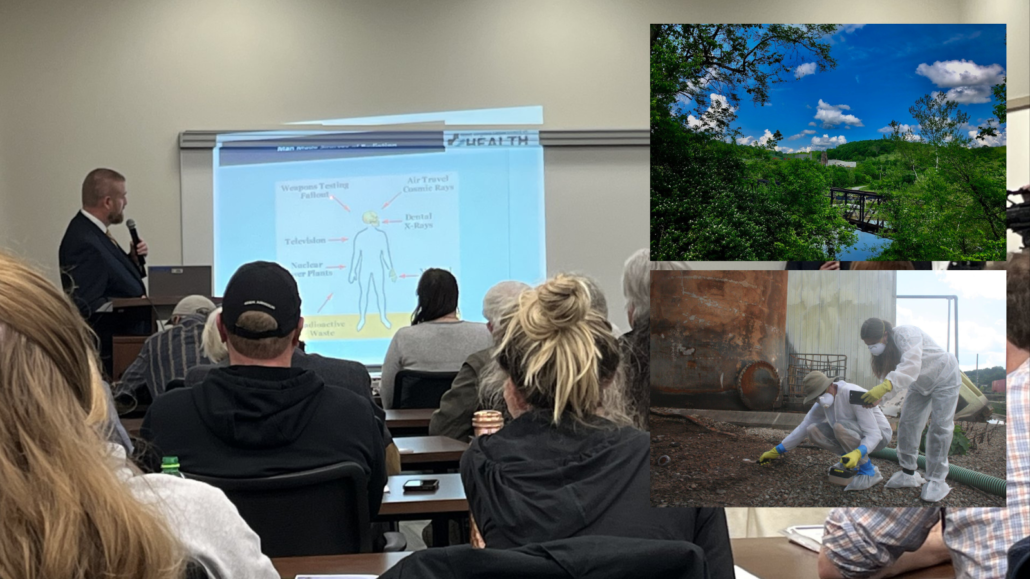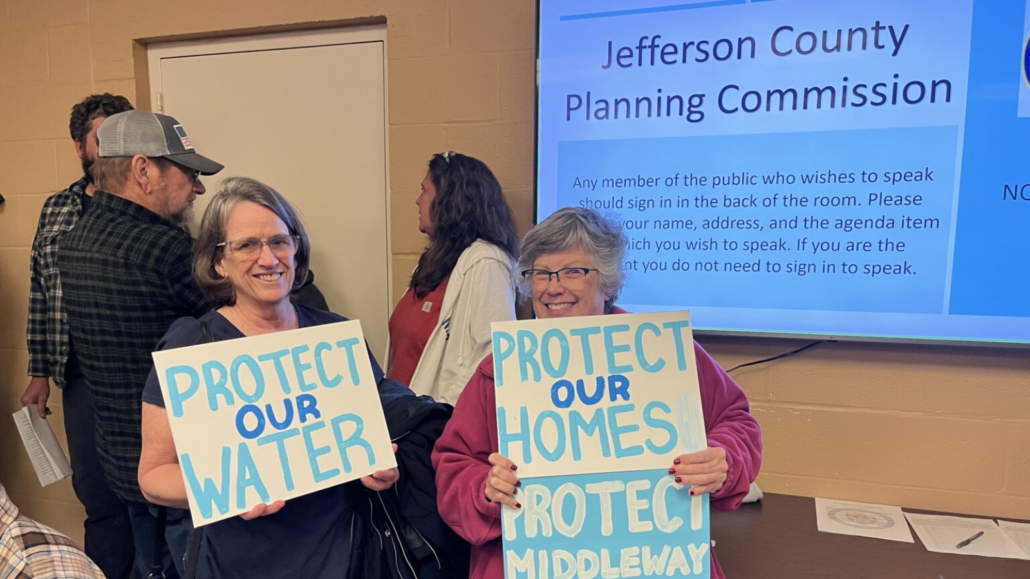Updates from WV Rivers Coalition
November 2024
Through Every Season, Your Advocacy Makes a Difference
Image of Canyon Doors courtesy of Randall Sanger.
Through every season, administration, and policy shift, our mission at West Virginia Rivers Coalition remains the same — and your voice is at the heart of this work. We hope you will keep showing up to advocate for clean water and healthy communities with us. Because clean water isn’t a partisan issue — it’s a basic need we all share.
We invite you to pause, reflect, and reconnect with us in our November member survey. We invite you to share your thoughts, hopes, and ideas about protecting West Virginia’s rivers and streams. Your input will guide our advocacy efforts in 2025 and beyond.
Landmark Settlement Targets Coal Mining Pollution in West Virginia Streams
Pictured is a photo from a 2022 report prepared for the WVDEP by Tetra Tech on total maximum daily loads for the Lower Guyandotte River watershed.
In a significant win for clean water and healthy streams, WV Rivers Coalition, Sierra Club, and WV Highlands Conservancy have reached a groundbreaking settlement with the EPA and WVDEP. The agreement, approved by the U.S. District Court for the Southern District of West Virginia, addresses coal mining pollution in the Lower Guyandotte River watershed.
This settlement ensures WVDEP, with EPA oversight, establishes a long-overdue plan to reduce pollution, called a total maximum daily load or “pollution budgets,” to restore streams damaged by decades of mining activity. These pollution budgets will hold polluters accountable and improve water quality for aquatic life and communities across the region.
West Virginia Rivers Coalition Deputy Director Autumn Crowe stated, “This settlement agreement is a good first step in getting our polluted streams the help they deserve. For too long, the State of West Virginia left our waters vulnerable to coal mining pollution, resulting in the degradation of thousands of streams. The efforts to reduce ionic pollution in the Lower Guyandotte River watershed will serve as a model that can be replicated throughout the state to restore other waters impaired by coal mining.”
Learn more about this historic effort to protect West Virginia’s rivers and streams at the button below.
Science Corner: What is conductivity and ionic pollution?
The graph featured above shows the frequency distribution of conductivity data collected by volunteers as part of the Water Quality Monitoring program in conjunction with Trout Unlimited and partner organizations. To the right is an example of a conductivity meter used to measure ionic pollution in streams.
“Conductivity” measures the ability of a solution to carry an electric current due to the concentration of charged particles or ions, and high values in streams can indicate pollution from mine drainage or roadways. Ionic pollution from mining typically is from sulfates, whereas chlorides typically indicate runoff from road salt applications during winter months. The EPA recognizes aquatic life impairment when conductivity exceeds 300 units in Appalachia, and runoff from mining operations often exceeds 1000 units in West Virginia streams. Read this recent blog by our Senior Scientist Than Hitt for more information.
Community Meetings Recap: Fairmont Brine Facility and Hydrogen Hub
Jason Frame, Director of Office of Environmental Health Services, WVDH, presents information on radiation during the public meeting. (11/14/2024, EPA Region 3). Two other images are overlaid, courtesy of Nancy Hilsbos and Justin Noble. The top show the facility’s proximity to the Mon River and on the bottom, Dr. Yuri Gorby tests the odd brownish dirt just outside the burnt out frack waste processing building with a Ludlum 3000 Digital Survey Meter, a type of Geiger counter. Readings in this area “maxed out” the unit. Beside him is Jill Hunkler, director of Ohio Valley Allies, a grassroots group active in communities threatened by fracking across the Marcellus-Utica.
At recent public meetings on the Fairmont Brine Processing facility and the proposed Appalachian Regional Clean Hydrogen Hub (ARCH2), one common thread emerged: communities are left with more questions than answers while facing serious threats to their health and environment.
Fairmont Brine Facility: The EPA and WVDEP detailed efforts to address radioactive fracking waste left behind at the abandoned Fairmont Brine Processing site. Despite updates, residents expressed deep concerns about exposure risks and the long-term impact of Technologically Enhanced Naturally Occurring Radioactive Material (TENORMs) on their community. While officials outlined some plans, much remains uncertain, fueling frustration and calls for more transparency. Officials urged people to stay away from the site and follow the nearby signs to ensure their health and safety. Community members emphasized the need for more to be done, including comprehensive testing to identify other potentially harmful chemicals residents may be exposed to. Additionally, there were reports of a new leak near the site, raising fresh alarms about contamination spreading beyond the facility. For updates and ways to get involved, visit the local Facebook group Fairmont Brine Fact Finders here or check out our fact sheet here.
ARCH2 Hydrogen Hub: At an open house for the proposed Appalachian Regional “Clean” Hydrogen Hub, attendees pressed developers on the risks of increased fracking, carbon storage, and pipeline construction. Communities fear this methane-based project will exacerbate air and water pollution while leaving behind more radioactive waste and health hazards. Mariah Clay, our Southern WV Coordinator, stated, “Let’s be clear: the proposed methane-based blue hydrogen development is not the solution we need. We deserve to be well — to have a healthy economy and a safe environment that allows us to invest in the health of future generations.” Learn more about Hydrogen here and check out some recent press coverage here.
These meetings highlight the urgent need for communities to keep showing up, asking questions, and urging decision-makers to protect our water, air, and health. Together, we must hold industry and officials accountable to ensure West Virginia’s future is one where our communities thrive in safety and well-being.
Community Pushback Delays Water Bottling Plant Plans in Jefferson County
Middleway residents Mary Mullins and Kathy McCormack display hand-painted signs denouncing plans for a local water bottle plant. Photo Credit: Jack Walker/West Virginia Public Broadcasting
Plans for a water bottling facility in Jefferson County, West Virginia, have hit a roadblock after the Planning Commission ruled the concept plan incomplete. The decision came after a marathon five-hour meeting at the Charles Town Library, where over 50 residents voiced strong opposition to the proposed Mountain Pure Water Bottling Facility by California-based Sidewinder Enterprises.
The 1-million-square-foot facility, to be built near a historic district, raised residents’ concerns over its potential to impact local water supplies, traffic, ecology, and historic preservation.
Our Clean Water Campaign Coordinator, Maria Russo, attended the meeting and commented: “In March, we performed a watershed walk, where we went along Elk’s Run, and we saw that places where residents said historically there had been three feet of water no longer had water above ground in that space. We know that Jefferson County has extreme concerns about groundwater availability, and these concerns have been raised to the county commission. In 2023, drought conditions required one water manager of Jefferson County to resort to backup water supply. With this plan, it’s unclear exactly how much water will be further withdrawn from the groundwater sources and whether or not this will vary seasonally.”
For now, the delay is seen as a community victory, and residents are staying vigilant as the situation unfolds.
The company has already revised and resubmitted a new concept plan. The next public workshop will be held on December 17 at 7:00 pm.
Now Hiring: Community Ambassadors
Are you passionate about wellness in your community and a future with clean water for all? We’re hiring Community Ambassadors across two regions of West Virginia.
We are contracting Community Ambassadors to have conversations with communities about the presence of PFAS in drinking water supplies. Our Ambassadors will engage local residents to ensure community priorities are at the heart of PFAS Action Plans to identify and address the sources.
West Virginia Rivers Coalition is seeking short-term contractors to serve as Community Ambassadors in the following 2 regions of West Virginia:
- Eastern Panhandle (communities of Berkeley Springs, Charles Town, Harpers Ferry, Kearneysville, Martinsburg, Summit Point)
- Northern Panhandle (communities of Benwood, Chester, Follansbee, Glen Dale, Weirton)
Check Out Some Exciting New Arrivals on Our Online Store!
Are you passionate about wellness in your community and a future with clean water for all? We’re hiring Community Ambassadors across two regions of West Virginia.
As we close out this November e-news, we’d like to end with gratitude. We are incredibly thankful for your steadfast support in protecting West Virginia’s waters and public lands. Your commitment to a cleaner, healthier future is what makes this work possible, and together, we’re building the momentum to ensure clean water for generations to come. Thank you for being the heart of this effort — we couldn’t do it without you.
You are one of our strongest supporters, so we want to give you a first look at the new items in our online store. Be the first to pre-order our 35th anniversary 2025 calendar featuring photos from members of our community, a greeting card set designed by artist and mountaineer Gabe DeWitt, and a bumper sticker for the river lovers in your life. Take a look at our updated online store today!

